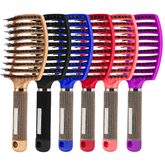Baricitinib drives regrowth in adolescents with alopecia areata

New clinical data from the phase 3 BRAVE-AA-PEDS trial show that the oral medication baricitinib produced significant hair regrowth at one year in adolescents with severe alopecia areata, including improvements on the scalp, eyelashes and eyebrows. The findings mark an important development for young people living with this autoimmune condition, and raise fresh questions about long-term safety, access and how treatment may change clinical care.
What the BRAVE‑AA‑PEDS findings mean
The BRAVE‑AA‑PEDS trial, reported in late 2025, evaluated baricitinib in adolescents with severe alopecia areata and found meaningful hair regrowth across multiple areas of the face and head after 12 months of therapy. The published summary highlights scalp, eyelash and eyebrow improvements — a notable outcome because hair loss in these areas can have a major psychosocial impact during adolescence.
Alopecia areata is an autoimmune condition in which the immune system attacks hair follicles, causing patchy hair loss and, in some cases, total loss of scalp hair (alopecia totalis) or all body hair (alopecia universalis). Although the course can be unpredictable, the physical and emotional effects are often greatest for teenagers, when self-image and peer relationships are particularly important.
How baricitinib works — and why it matters
Baricitinib is a small‑molecule inhibitor of the Janus kinase (JAK) family of enzymes, which play a role in inflammatory signalling. By blocking JAK pathways, baricitinib can reduce the immune response that targets hair follicles in alopecia areata. JAK inhibition has been a focus of research for several inflammatory and autoimmune conditions, and the BRAVE‑AA‑PEDS results add to an evolving evidence base about its use in people with hair loss.
For clinicians and patients, the trial’s significance is twofold: it demonstrates that oral immunomodulation can restore hair in adolescents, and it reinforces the idea that treating alopecia areata may improve more than just scalp appearance — eyelashes and eyebrows, which contribute to facial expression and self-perception, can recover as well.
Key takeaways from the trial
- Phase 3 BRAVE‑AA‑PEDS reported significant hair regrowth at one year in adolescents with severe alopecia areata.
- Improvements included scalp hair and important cosmetic regions such as eyelashes and eyebrows.
- The findings underline the potential of JAK inhibitors as a therapeutic option in younger patients, but long‑term safety and follow‑up data remain essential.
Safety, access and unanswered questions
While efficacy signals are encouraging, JAK inhibitors carry recognised safety considerations that must be assessed carefully in adolescents. Regulatory decisions, prescribing guidance and routine monitoring typically consider infection risk, laboratory changes and rare but serious events noted in adult populations. The BRAVE‑AA‑PEDS disclosures on safety are important, and ongoing surveillance and post‑marketing studies will be needed to establish longer‑term profiles in younger people.
Practical issues also remain. Clinicians will need robust guidance on candidate selection, dosing for adolescents, monitoring schedules and how to balance benefits against potential risks. Equally, equity of access — whether through national health services, private prescription routes or clinical commissioning — will determine how widely such therapies can help those affected.
How families and clinicians can approach the news
For families and teenagers hearing about these results, a measured approach is sensible. Points to discuss with a dermatologist or paediatrician include:
- Severity and pattern of a young person’s alopecia and whether systemic therapy is appropriate.
- Potential benefits versus known and unknown risks of JAK inhibition in adolescence.
- Available alternatives, monitoring plans, and what to expect in terms of timelines for hair regrowth.
Open conversation about psychological support is also vital; hair loss can affect mood, self‑esteem and social life, and combining medical treatment with counselling or peer support can improve overall outcomes.
Takeaway
BRAVE‑AA‑PEDS provides important evidence that baricitinib can produce significant hair regrowth at one year in adolescents with severe alopecia areata, including scalp, eyelash and eyebrow improvements. The results are promising for young people living with the condition, but they also underline the need for careful safety monitoring, longer‑term follow up and clear clinical guidance before broad adoption.
Explore More: Discover related reads from Hairporium — News • Guides • DIYs • Expert Articles.
More From the Experts: Read interviews and insights from stylists and professionals on Hairporium Expert Articles.







